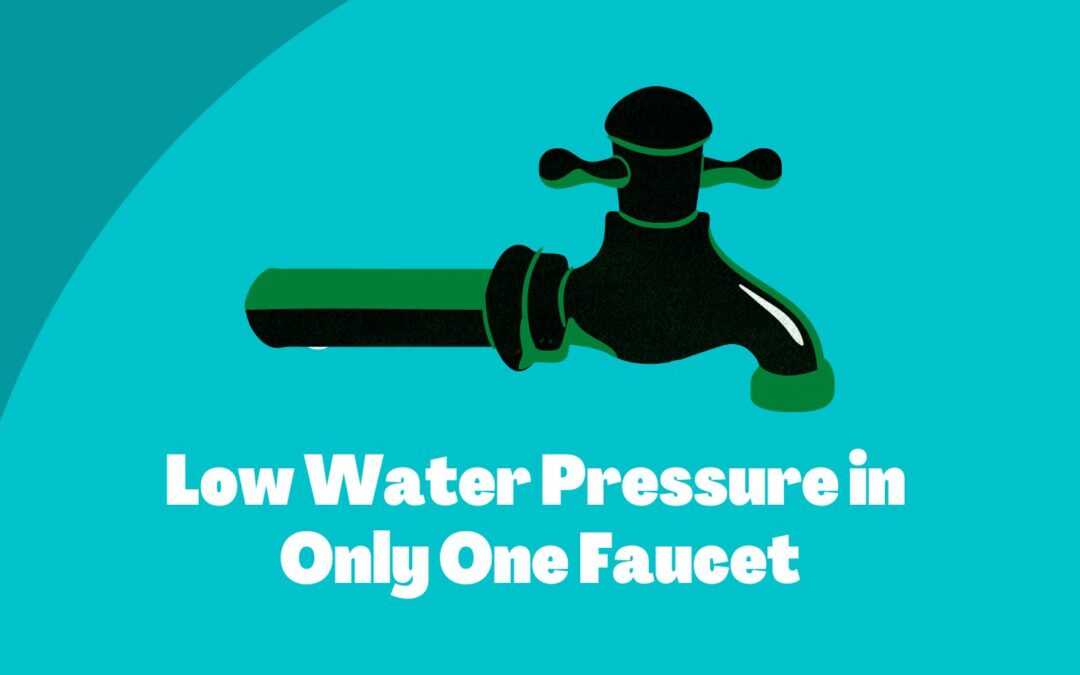Sometimes it is a matter of worry that only one faucet causes low water pressure. However, other faucets in the house are working fine. There are a few things to check in this situation to determine the possible cause. This guide will discuss the likely reason that causes low water pressure in only one faucet.
The Troubleshooting Guide to Water Pressure in only single faucet
Check Aerator
An aerator adds air to the water flow in a faucet, resulting in a more consistent, straight stream. However, mineral disposals can cause it to clog.
At the end of the faucet, there is a minor screen fitting. As a result, water flow at full expected force can be blocked by mineral deposits accumulating over time.
The aerator should be removed and cleaned if this is the case. Use a toothbrush to remove any lingering pieces after flushing it out and soaking it in diluted vinegar overnight.
It is also possible for showerheads to become clogged with rust and limescale, which can prevent water from flowing. Mix white vinegar and water to descale the fixture.
Sometimes, breaking it free may require the use of pliers. Keep the finish intact by being careful not to damage it. Most hardware stores sell inexpensive replacement screens or small inserts that can be soaked in a product to remove lime and minerals. Meanwhile, turn the water off the stopper and see if the water flow differs.
Look for Leaks
Leaks can affect your water pressure and increase your water bill. Leaks are most likely to occur under sinks, dishwashers, and washing machines. However, look for water spots in your basement as well.
You can also gain insight from your water bill. Check the last three or four months’ water bills for any irregularities. A leak may cause your water bill to spike suddenly. Unfortunately, not all leaks are visible.
Faucet cartridge or stem
In this device, the flow of water is controlled by the faucet’s handle. Replace it if necessary. Call a plumber if you are not a handy do-it-yourselfer.
Check the water pipes
Water pressure can be significantly reduced when old galvanized steel pipes corrode to restrict water flow substantially. Over time, corrosion and scale buildup gradually close off these pipes.
This problem has developed over the years. There will be no sudden pressure drop due to the gradual reduction in water flow. As a result, you may experience significant corrosion if you move into an old house with steel pipes, and the problem may worsen relatively quickly.
Without changing the existing pipes, there is no possible solution to this problem.
Low Water Pressure In Kitchen Sink Only
If your kitchen sink has a single faucet with low water pressure, you may be able to fix the problem by repairing it or the pipes that serve it.
Sometimes, the water pressure is low because the temperature limiter is not adjusted correctly. Once the faucet handle is removed, you can adjust the limiter by hand with a plastic washer. Each faucet brand has its temperature limiter washer set up, so check your brand and find your brand’s instructions. So, you’ve eliminated these possible causes. Now What?
Check the Faucet
There may be a problem with the faucet. Despite their longevity, faucets do not last forever. It is possible for the valves not to open entirely if the internal parts go wrong, which can lead to low or uneven water pressure.
Check the water supply lines beneath the sink before removing the faucet to see if it’s a problem. The little imp might have been turning the valve handles if you have children. The valve may have developed a leak. There is no such thing as an eternal valve.
Are there no results? The faucet probably needs to be replaced. First, you should turn off the water supply under the kitchen sink by returning to those valves. Then, to relieve pressure, open the faucet to release any water already in the pipeline. Replacing an outdated faucet isn’t as difficult as you might think.
You can complete the project with a basin wrench and a few other standard tools. Amateurs should usually be able to finish it within an hour or two.
Frequently Asked Questions
How Can I Fix Low Water Pressure If I Have a New Faucet?
Avoid low-flow faucets
There is some faucet found in the market that provides a low flow of water. These faucets are remarkable for saving water bills and reducing water waste.
Special cartridges in these faucets reduce the flow rate of water from the spout. Therefore, you can increase your water pressure by avoiding low-flow faucets.
Remove the cartridge and flush
Sometimes debris gets lodged inside the cartridge holes when installing a new faucet. As a result of soldering, filing, or installing new piping, debris may accumulate. A cartridge hole allows water to pass through the cartridge and into the faucet’s spout. Until whatever is clogging the holes is removed, there will be a lower water pressure if the holes are wholly or partially blocked.
In this case, it’s a matter of clearing out debris that reduces your faucet’s water pressure. This can be fixed by removing the faucet handle and bonnet nut. After that, remove the cartridge and flush it with clean water. Before connecting the supply hoses to the faucet, ensure they are rinsed in a bucket.
How can I increase the water pressure of my kitchen faucet?
A clogged aerator or cartridge is the most common cause of low water pressure in a kitchen sink. At the end of the faucet’s spout is the aerator, which is the last part of the faucet to touch the water before it enters the sink.
It is recommended that the aerator be removed and cleaned if this is the case. After flushing it out and soaking it overnight in diluted vinegar, use a toothbrush to remove any remaining pieces.
Final Words
Calling a plumber is the final solution for fixing the problem of low water pressure in a single faucet. But you can do it yourself if you find your possible reasons from the above guide.

As the chief content writer, Hassan Al Sarker works as a professional kitchen-based content creator at Kitchen Liker.
In addition to reviewing the content published on Kitchen Liker, he ensures that it is accurate, relevant, and helpful. As a result, all the reviews and information published at Kitchen Liker are neutral and userfriendly.
Hassan Al Sarker has a bachelor’s degree in Hotel and Tourism Management From the Newyork University. Before joining Kitchen Liker, he was a contributor at Kitchen Club, United States.

